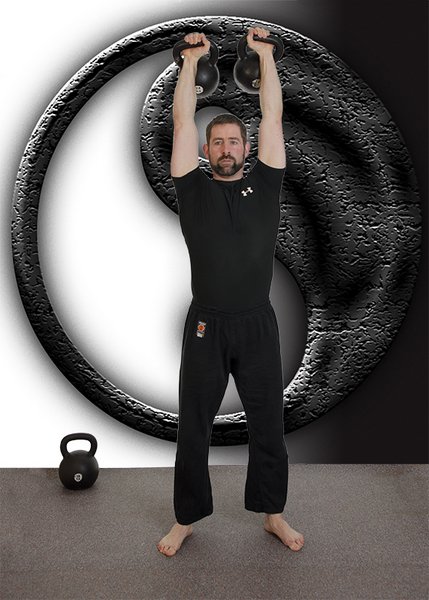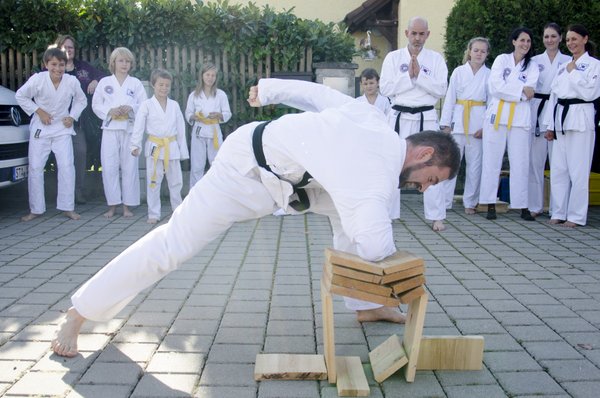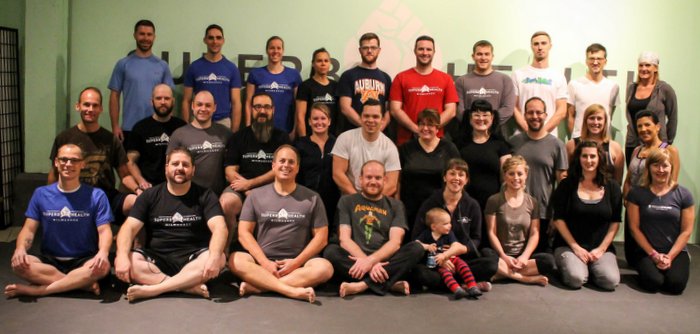
Regardless of how isolated, individual and introverted you are, humans are altruistic as confirmed in a famous study called “The Dictator Game.” If we wish to thrive we need to work together.
As a business owner and participant in the fitness industry, I’ve regrettably made the mistake of puffing out my chest with failed bravado. The “grinder” mentality of “I’m right and everyone else is wrong” leaves that individual isolated and angry. The fact is, the fitness industry changes all the time, although some tried and true forms of training remain effective. Kettlebells, calisthenics, martial arts, climbing, carrying, running, swimming and anything else that follows our primal instincts tend to work well.
The point I’m looking to get across, with my friend Lori Crock here, is if you want to grow your business and promote yourself within the fitness industry, it’s best to work together. Larger corporations practice this tactfully all the time!
16% of Americans have a gym membership. 67% of those 16% don’t use it, leaving just 6% of Americans who actually use their gym memberships. Now let’s be honest, how many of that 6% are using kettlebells and calisthenics at the gym? Considering that 6% is primarily made up of giant corporate chain memberships, I would have to guess we’re now looking about .005% of the 6% of Americans utilizing their gym membership for kettlebells and/or calisthenics. Now we have an honest view of what we’re up against, does it make sense to fight with one another?
Clearly if we have such a niche market, it only makes sense for RKC instructors to work together within or community. If you have an RKC within a couple hours distance from you, set up workshops together. Schedule RKC workshops, HKC workshops, and help each other promote them. When working together, you have automatically doubled the growth potential by 100%. Remember, we’re a niche market. Most people have never heard the letters RKC put together in a sentence before.
If a fellow RKC reaches out to work with you, be open to the opportunity to grow your business. If you get a call or email, call or email back, this is the first step towards establishing a trustworthy relationship; it also confirms a certain level of professionalism! We make up an extremely insignificant number within the fitness industry. To make that number more significant, we MUST work together and not against each other.
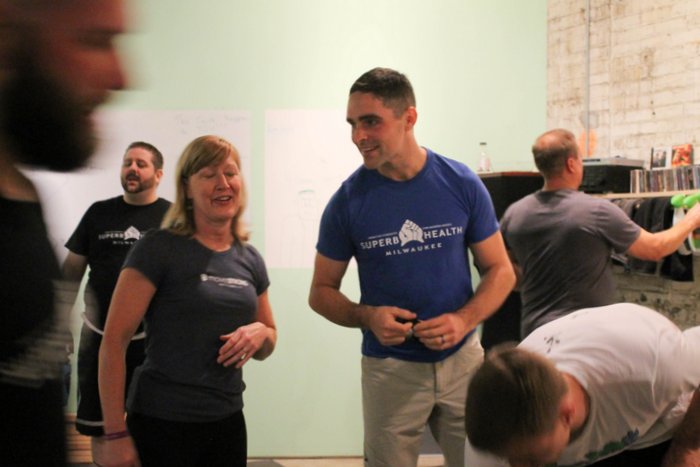
One more time: we make up an extremely small number within the fitness industry. To make that number more significant, we MUST work together.
“None of us is as smart as all of us.” ~Ken Blanchard.
Lori: working together isn’t hard to do. Nick and I are in different states, but our businesses are connected in many different ways.
One of Nick’s students, Andrew Keller, a true inspiration, with an 80 lb. + weight loss, earned his HKC at the October, 2014 certification event I was privileged to host as the owner of MoveStrong Kettlebells in Columbus, Ohio with Master RKC Andrea Du Cane.
Nick sent Andrew our way, and Andrew, now an HKC, worked hard to achieve his goal. Andrew is now a Superb Health Milwaukee instructor and continues to inspire me and many others.
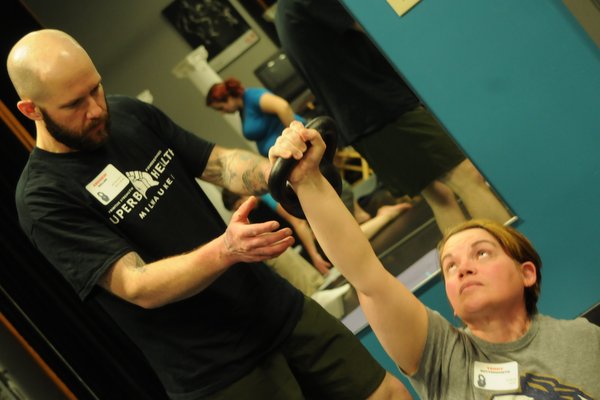
So when I was traveled to the great city of Milwaukee recently for the Progressive Calisthenics Certification (PCC) Workshop, Nick and I met in person and I had the opportunity to co-teach a kettlebell class at Nick’s gym.
Nick and I had ‘met’ online as new RKC Team Leaders, but there is nothing like meeting in person. I believe that it is a worthy goal to try to meet in person the people we are connected with online, so that we are friends in the true sense of the word.
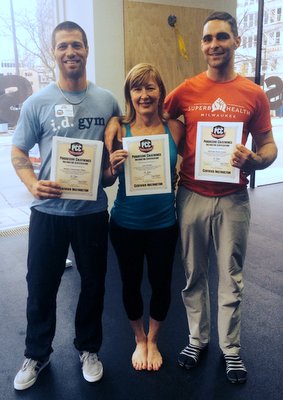
While our fitness niche may be small compared to the industry at large, we have a strong brand community and working together delivers many benefits, including:
- Increased learning – sharing business practices, marketing, programming and clients.
- Deepened loyalty – the more we have connections to individuals within our community, the more we have a sense of belonging and pride in what we do.
- Attracting others with results – a strong team delivers results that attract others to the community.
- Encouraging accountability – we keep each other on track per RKC standards.
- Driving new directions – we challenge each other to think, assess, expand, create and take risks.
- Sharing what’s great – why recreate if something is already great? We share content, promote each other and collaborate online and at events.
This business excites us and our students inspire us. The RKC methodology is sound and many of us have built our businesses around it. So we already have a lot in common.
With more than 50 percent of small businesses failing within three years, and gyms second only to restaurants in this regard, it makes sense to work together to share knowledge, business and marketing practices, programming, hard lessons and successes, and even clients, to succeed in this business and to raise the standards in the fitness industry at large.
Are you in?
***
RKC Team Leader Nick Lynch is a Strength and Conditioning Coach at Milwaukee School of Engineering University (MSOE). He owns Superb Health Milwaukee, a kettlebell studio in Milwaukee, WI. Most recently, he became an RKC Team Leader. He has 13 years of full-time training and coaching experience and a lifetime of wellness education. Nick lives in Milwaukee, WI with his wife Natalie and son Weston.
Lori Crock, RKC Team Leader, FMS II and MovNat MCT II, owns MoveStrong Kettlebells in Dublin, Ohio where she teaches small group kettlebell classes to all ages and fitness levels and continues to be amazed, inspired and educated by her students. Her email address is lori@movestrongkbs.com
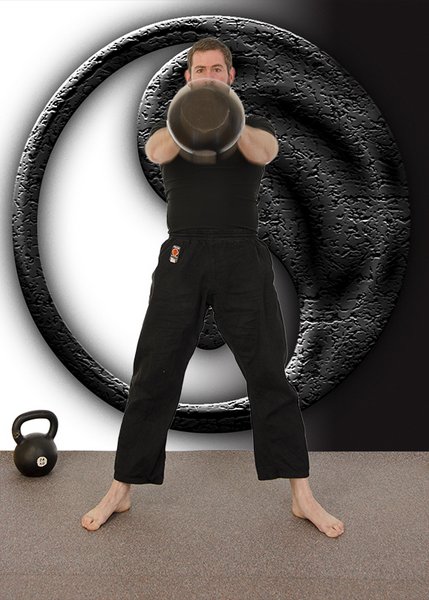 I was introduced to this term years ago when I worked as an IT Consultant for a German automotive supplier. I learned that it was this ancient Japanese concept that transformed Toyota from a small and inefficient car manufacturer into the de facto worldwide industry leader in production efficiency and accuracy. Today virtually all major car manufacturers use the Just in Time concepts invented by Toyota to produce their products. These concepts can save tons of money in production costs while maximizing quality at the same time.
I was introduced to this term years ago when I worked as an IT Consultant for a German automotive supplier. I learned that it was this ancient Japanese concept that transformed Toyota from a small and inefficient car manufacturer into the de facto worldwide industry leader in production efficiency and accuracy. Today virtually all major car manufacturers use the Just in Time concepts invented by Toyota to produce their products. These concepts can save tons of money in production costs while maximizing quality at the same time.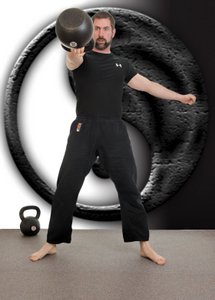 Kaizen and the Hardstyle Kettlebell
Kaizen and the Hardstyle Kettlebell